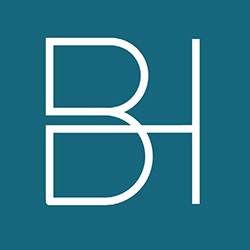
Interest rates are low, low, low, and that means it’s a great time to be a home buyer! While median home prices haven’t dropped much nationwide, the costs you save with a low rate over the course of your loan more than make up for any monthly market swings. So, if you’re ready to take the plunge, and if you’ve saved for a down payment (more on that below), it’s time to consider your financing options.
These days, the 30-year fixed-rate conventional mortgage remains the predominant form of financing for home purchases around the country. At an average interest rate of just 3.61% in September of this past year, standard terms on these loans are currently quite favorable to buyers. However, as consumers grow more sophisticated or seek more help through other alternatives, we are beginning to see a rise in the percentage of purchases financed through non-conventional means.
Per the National Association of Home Builders’ analysis of 2018 Census Bureau data, in 2018 nearly 30% of financing secured by home buyers was non-conventional. FHA loans led the pack at 11%, followed by cash purchases at around 10%. While you may or may not have the stack of dough on hand to make an all-cash offer, loans such as an FHA first-time buyer loan may be perfect for you.
Let’s take a look at the loan type options, conventional and non-conventional, that you can consider for your Orange County home purchase:
Fixed-Rate Loan:
The big daddy, the standard by which all others are judged. Accounting for over 70% of loans originating in 2018, conventional fixed rate mortgages are far and away the most common form of financing. These loans offer a single interest rate over the course of the loan, from day-one to day-ten thousand, nine hundred and fifty seven (and a half – thanks leap years!). A conventional fixed-rate loan is perfect for buyers who want a predictable payment and who intend to stay in their new home for the long haul. A down payment is required, so be sure to pad your savings account if this loan sounds right for you.
Adjustable-Rate Mortgage (ARM):
As the name implies, adjustable-rate mortgages do not remain constant like a fixed-rate loan. Typically offered at lower starting rates compared to fixed-rate loans, an ARM offers a better deal for a period of time such as five to ten years, and then the rate “adjusts” to the current market. So, if you’re planning to sell the home two or five or even ten years down the line, this financing option may be a great option for you to save money during that period. Considering the incredibly low rates offered these days, it’s unlikely that your ARM rate will remain as low once the initial fixed period runs out, so make sure that the terms of your ARM coincide well with your long-term plans.
FHA Loan:
Backed by the Federal Housing Administration, an FHA loan offers the opportunity for qualifying buyers to pay as little as 3.5% down on their home purchase instead of the typical recommended 20% on a conventional loan. While 20% is not required by all conventional financing, conventional guidelines tend to be more stringent, so FHA loans are a perfect option for prospective buyers with decent credit but lower savings to make a purchase. FHA loans are fixed-rate over 15- or 30-year terms, with a maximum loan amount that varies by state and county. Note that buyers of FHA loans must use the home or investment property purchased as their primary residence, and they are required to pay for mortgage insurance over the course of their loan.
VA Loan:
Veterans who have served for 90 consecutive days during wartime, 180 days during peacetime, or spent six years in the reserves are eligible for a VA loan with no down payment and no mortgage insurance requirements. These loans, backed by the Department of Veterans Affairs, do have some additional requirements, however: The home must serve as the buyer’s primary residence, and the home must fit within certain standards set by the program. That means no fixer-uppers are allowed!
USDA Loan:
If the bustle of city living no longer suits you and you’re looking to start a “Green Acres” life of your own, consider a Rural Development loan from the US Department of Agriculture. These loans are backed 100% by the government, meaning you don’t need to pay a down payment, and the program offers discounted mortgage rates for those looking to lay down roots in a rural area. Guidelines include restrictions on buyers’ debt-to-income ratio (not to exceed 41%), and property purchased must be in an eligible rural area as designated by the USDA. Learn more about the various types of USDA loans.
Bridge Loan:
If you’re looking to buy a new home but your money is tied up in your current home’s equity, then a bridge loan is your answer. Like its namesake, a bridge loan spans the gap between the home you currently own and the home you want to purchase. Lenders will combine your current and your new mortgage payments into one, and when you sell your current home you will use those proceeds to pay back the bridge loan. These loans are great for buyers who currently own a home, have good credit and a low debt-to-income ratio.
Bucking Convention(al Loans)
We hope that this brief overview helps to give you an idea of your options for financing the purchase of your next home.
As local Orange County real estate experts, we have seen it all at the Bree Hughes Team. We know how important it is for you to consider all your options. For a good portion of buyers, a conventional fixed-rate loan makes the most sense. But for many others, these alternatives are worth considering!
Let us know if you’re in the market to buy a home, and we’ll be happy to hook you up with a trustworthy lender offering competitive rates. It’s our pleasure to assist in anything real estate related, from the first steps of securing financing to the day you move in and for years to come.
